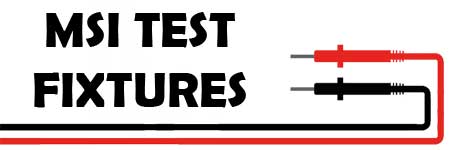
Robotics PCB test fixtures plays a vital role in the robotics industry, which heavily relies on electronics and PCBs to power and control robotic systems. Here are the key benefits of PCB testing to the robotics industry:
1. Ensuring Robust Performance: Robots are often used in critical applications, such as manufacturing, healthcare, logistics, and space exploration. PCB testing ensures that the electronic components in robotic systems function reliably and consistently under various operating conditions, reducing the risk of malfunctions and improving overall performance.
2. Increased Reliability and Safety: Robotic systems need to operate safely, especially when interacting with humans or handling delicate materials. PCB testing helps identify potential faults or defects in the electronic components, reducing the likelihood of safety hazards and ensuring that robots can perform their tasks with a high level of reliability.
3. Optimized Efficiency: PCB testing helps identify inefficiencies or irregularities in the electronic circuits of robotic systems. By addressing these issues, manufacturers can optimize the power consumption and overall efficiency of the robots, extending their battery life and reducing operational costs.
4. Facilitating Innovation: Robotics is an area of rapid technological advancement. PCB testing enables researchers and developers to experiment with new electronic designs and components, pushing the boundaries of what robots can achieve. Testing ensures that these innovations are reliable and safe before they are deployed in real-world applications.
5. Faster Time-to-Market: Efficient PCB testing processes accelerate the development and manufacturing of robotic systems. By detecting and resolving issues early in the design phase, manufacturers can minimize delays and quickly bring innovative robotic products to the market.
6. Improved Fault Diagnosis and Maintenance: PCB testing helps in diagnosing faults and failures in robotic systems. When a robot malfunctions, testing can pinpoint the exact electronic component causing the issue, simplifying the maintenance process and reducing downtime for repairs.
7. Adaptation to Harsh Environments: Some robots operate in challenging and harsh environments, such as space, deep sea, or disaster zones. PCB testing ensures that the electronic components can withstand extreme temperatures, humidity, vibration, and other environmental factors, making the robots more robust and reliable.
8. Compliance with Industry Standards: Robotics industry standards, such as ISO 10218 (Safety requirements for industrial robots) and ISO 13482 (Robots for healthcare applications), mandate stringent safety and performance criteria. PCB testing helps ensure that robots meet these standards, providing a high level of safety assurance in various applications.
9. Integration of Advanced Sensors: Many modern robots use various sensors, such as lidar, cameras, and proximity sensors, to perceive and interact with their surroundings. PCB testing ensures the accuracy and reliability of sensor data, enabling robots to make informed decisions based on precise inputs.
In summary, Robotics PCB test fixtures are crucial to the robotics industry as it guarantees the reliable and safe operation of robotic systems. It enables innovation, efficiency, and compliance with industry standards, ultimately leading to the development of advanced robots that can perform a wide range of tasks safely and effectively.
